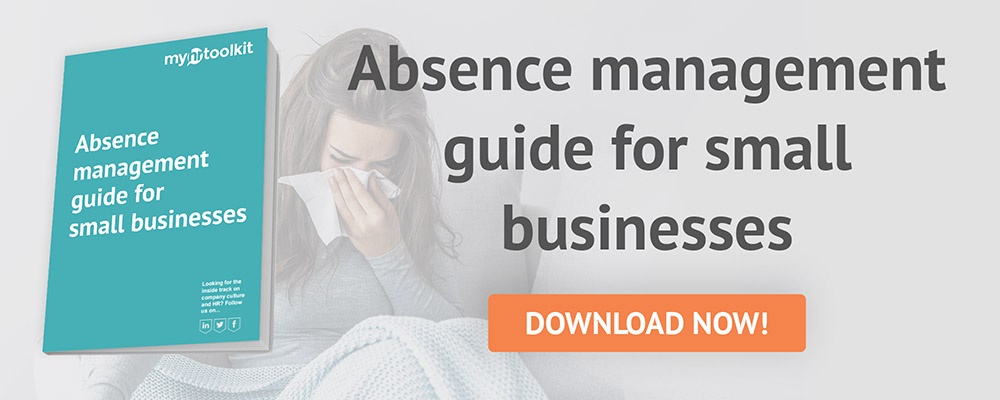How can businesses best manage employee absence given the ongoing effects of the pandemic on both employees' physical and mental health? Read HR consultant Kate Marchant's guide on managing absence in the new normal to learn how to manage absence effectively.
It’s fair to say that all our lives have changed dramatically since March 2020. It’s also the case that each and every one of us will have had a different experience of lockdown. Some people may have been only mildly affected, whereas others will have seen a major impact on their lives by way of job loss, illness, bereavement, and financial worries.
It’s also true that Employers have all had varying experiences of lockdown – dependant on the industry they operate within. Those employers based in the Retail, Hospitality and Travel industries will have had a difference experience to those based in the Banking and Professional Services industries, for instance.
The former have likely been unable to fully operate or not operated at all for prolonged periods during the lockdowns, which has seen their employees furloughed or even made redundant. The latter have pretty much been able to operate as normal – albeit with vast numbers of employees working at home (again, still having a major impact on working and home life as many people have had to juggle work and childcare).
How the pandemic is impacting staff health

When you consider this backdrop, in which so many have experienced upheaval, fear, uncertainty, anxiety, sleeplessness, bereavement, and helplessness, it really is the making of a perfect storm of health issues.
All of this brings a massive challenge for employers in terms of how they manage absence in this new and, in many cases, remote world – and not least because this last 16 months or so has seen a massive increase in mental health issues.
We are also seeing a substantial number of people who are suffering from long COVID, which in itself may well become recognised as a disability under the Equality act, given the long-term effects it can have on people (note that the TUC are calling for long COVID to be fully recognised as a disability and COVID to be classified as an occupational disease).
Tips on managing absence
So, how on earth do Employers manage absence in this new world? Well, in many ways it’s not that much different to the pre-COVID world; however, the approach taken by employers probably needs to be more nuanced and flexible than it was pre-pandemic, given the sheer extent of challenges faced by so many employees.
Here are my tips on managing absence in the new normal:
Review absence policies and procedures

Make sure these have been adapted to accommodate the new normal. Specifically, employers may need to amend the rules around notification of absence if they have a workforce that is based at home and/or a mix of both remote working and office-based working. Whatever the case, it needs to be made clear to employees what is expected around notification.
Self-isolation
Consideration needs to be given around how to handle employees who are requested to self-isolate – again, employers need to set out their expectations, for example on whether they wish to see proof of any such requests.
Sick pay disparities
There needs to be clarity about how pay will be affected when employees have been advised or instructed to self-isolate. Of course, employees who can work at home are able to continue as normal and be paid as normal if they are able to work; however, employers who have a mix of frontline and remote workers need to fully consider how they will treat (in terms of pay) those employees who are unable to work at home but are required to self-isolate.
As a minimum, any employees required to self-isolate are entitled to SSP, but if they are unable to work from home, is it really fair that they only receive the minimum payment for something that is beyond their control? There is currently an option to furlough employees who find themselves in this situation; however, this will likely change in the coming months as the scheme winds down.
Occupational Sick Pay
Employers offering enhanced Occupational Sick Pay will need to update their own rules around this to cover self-isolation and they need to consider issues around parity (or lack of).
Offer support

Employers will need to be supportive of their staff and accept that everyone has their own worries and anxieties, particularly around the pandemic. Employees are more likely to open up and discuss any health issues they have if they feel a safe environment exists for them to do so.
So, it’s not just about providing support when health issues arise, it’s about developing a culture where regular catch ups which have a specific focus on wellbeing are part of the norm and demonstrate employers are interested the employee’s life outside of work.
Be consistent…
In the application of policies and procedures, for example, when completing return to work meetings. If the policy is that they are to be done after every absence, then this needs to happen. If there is a haphazard approach, then this risks inequality as to how they are applied and possible exposure to discrimination claims.
Return to work meetings can be done remotely and are a valuable tool in managing absence. Again, procedures may need to be adapted to specify they may also be carried out remotely.
Engage with Occupational Health

Early intervention with occupational health can often facilitate a return to work – especially where there are mental health issues. The guidance given by such professionals is invaluable and can really help the employer make balanced decisions based on professional advice.
Occupational Health is nothing new, but it is probably even more important these days given the heightened level of mental health problems and long COVID associated issues. Getting correct, factual, and appropriate professional advice is absolutely key.
Consider Employee Assistance Programmes
Introducing an Employee Assistance Programme (EAP) need not cost the earth and can be a fantastic support for employees as they offer counselling services: whether it be around bereavement, anxiety, or financial issues. If this is absolutely not viable for employers, then consider Mental Health First Aiders (MFHAs), who can often provide a level of support themselves and signpost employees to the most appropriate type of support.
Of course, there is so much more that can be done, but possibly the most important thing for employers to do is to create an environment that enables employees to raise and discuss issues in an open and transparent way without fear of reprisal. The absence ramifications of the pandemic are possibly only beginning, so make sure you've got the right strategies in place to tackle its effects on your business.
Learn how to monitor and manage absence more effectively in your business with absence management software.
Read more from the myhrtoolkit blog
Staff returning to work after COVID: what do HR experts advise?
7 ways to maximise employee retention as we return to the workplace

Written by Kate Marchant
Kate Marchant is an experienced HR professional and CIPD Associate Member who offers straight talking HR solutions for SMEs with friendly and jargon free advice through her consultancy Running HR Ltd.


 Holiday Planner
Holiday Planner Absence Management
Absence Management Performance Management
Performance Management Staff Management
Staff Management Document Management
Document Management Reporting
Reporting Health and Safety Management
Health and Safety Management Task Management
Task Management Security Centre
Security Centre Self Service
Self Service Mobile
Mobile




